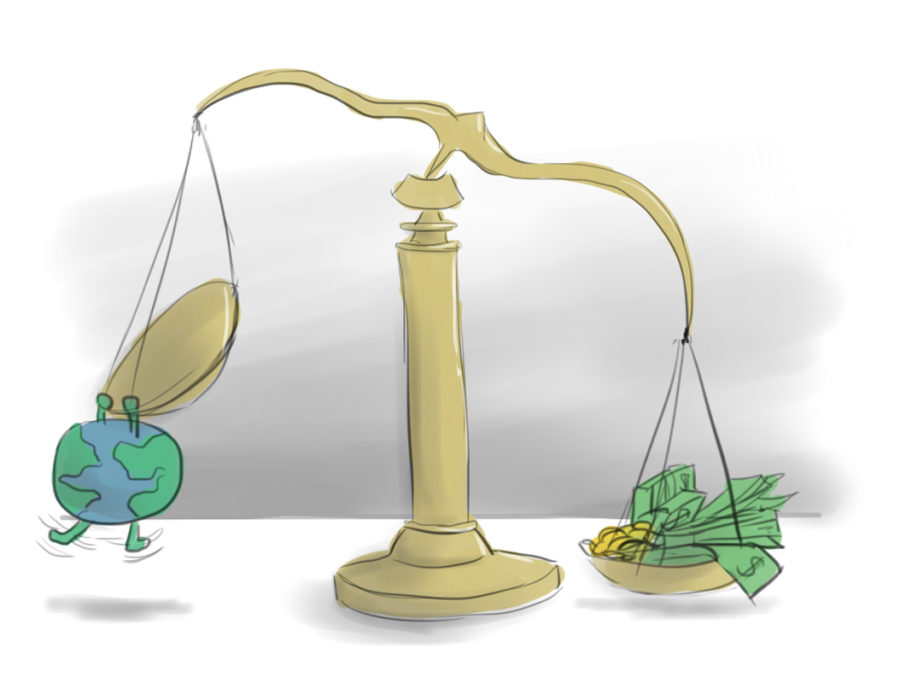As the proud owner of a private jet, two helicopters and a four-story commercial plane, it’s no surprise that President Trump is not a friend to the environment.
He’s repeatedly claimed that climate change is merely a hoax. But on that issue, he doesn’t represent the majority of Republicans any more. Among conservative voters, the number of people who believe in climate change has doubled between 2014 and 2016. And the Republican party varies widely on its collective opinion regarding climate change and its causes, with only those on the outermost fringe of the party — including 41 percent of Tea Party Republicans — denying climate change exists at all.
The goal for most Republicans is to balance economics and environmental concerns as equal goals — an idea not too far out of step with Democrats’ goals start combating climate change immediately. Given the GOP-majority Congress, the only way to make environmental change for the next few years will have to include deals that benefit both their environmental agendas and conservatives’ economic ones.
This means compromises will have to be struck in one way or another. Investing in energy sources such as fracking or horizontal drilling that produce lower levels of carbon emissions is one option. Or instituting carbon taxes or industry-wide standards for performance, as some on the right have already suggested, is another plausible choice. Even though these issues would effectively be examples of Democrats conceding on climate change, they’ll at least be more progress than sticking to their platforms no matter what.
Since his inauguration in January, Trump has issued three executive orders directly focused on reducing both the quantity and standards of current environmental regulations. He signed his most recent order last week as the first step toward delivering on his campaign trail promise of cancelling the Paris Agreement.
Participating countries in the agreement pledge to do their best to reduce their role in the changing climate. For each country, this includes lowering its environmental impact — through lowering carbon emissions and divesting in fossil fuel — based on its national contribution and continuing to develop these efforts in the future.
In contrast, Trump’s executive order consists of eight sections detailing specific actions that will dial back environmental regulations placed on various energy industries, including natural gas and coal. Section One calls for existing regulations to be placed under review to ensure they are not burdening the use or development of energy within the United States. And Section Five poses a more immediate threat to the environment, calling for a repeal of an Obama-era policy encouraging environmental regulators to include climate change as a factor when creating regulations.
This executive order is proof of ways the Trump Administration and a Republican-controlled Congress can craft legislation and distribute funds in ways that will further harm efforts to combat climate change. If Democrats aren’t willing to make moves away from their core ideals on global warming — and give up the fracking fight for now, for instance — they’ll risk losing even more ground on the issue until the next mid-term elections.
If carried out to its fullest extent, this executive order will impede efforts to reduce U.S. emissions as promised by former President Barack Obama when he signed the Paris Agreement in 2016. But since Obama is no longer in charge, the question of whether we will still adhere to what we agreed to in Paris is a sticky subject — especially when we consider the often-polarizing views our two parties have on issues of climate and global warming.
While there is a need to revitalize the United States’ economy and encourage energy independence — as many Republicans believe their regulation rollbacks are doing — we can’t ignore the consequences our actions will have on the environment in the process. The United States accounts for less than five percent of the world’s total population, yet ranks first for non-methane volatile organic compound emissions and second for carbon dioxide emissions.
The Environmental Protection Agency states that if emissions are not substantially reduced, environmental changes such as rising ocean levels, increasing temperature and irregularities in precipitation and extreme events will impact our food supply, water resources, infrastructure, ecosystems and health.
Conservatives and Republicans aren’t adamantly opposed to investing in a cleaner, more efficient future — they just need to see an economic motivation behind it. And for liberals, being proactive about the environment doesn’t have to be an immediate switch to clean, renewable energy — as ideal as that would be — but it can be legislation that starts tackling climate change now with enough limitations to appease Republicans.
Congress could come together to produce bills that more heavily incentivize reducing emissions instead of punishing companies who can’t or won’t comply, an environmental win for Democrats and an economic one for Republicans. Increasing the availability of grants that help to reduce the cost of meeting higher regulatory standards could help to fortify the path to cleaner energy the left so desperately seeks — while keeping the money in the pockets of big industries, as the right feels so compelled to do.
With a Trump administration planning to make any advancements on environmental issues more difficult, now is the time to find ways Democrats and Republicans can compromise when it comes to climate change.
For those of us who support stopping global warming wholeheartedly, it’s the only way to do so without having to wait years and another election cycle to do it.
Elise primarily writes about education and environmental issues for The Pitt News.
Write to her at eml94@pitt.edu.


